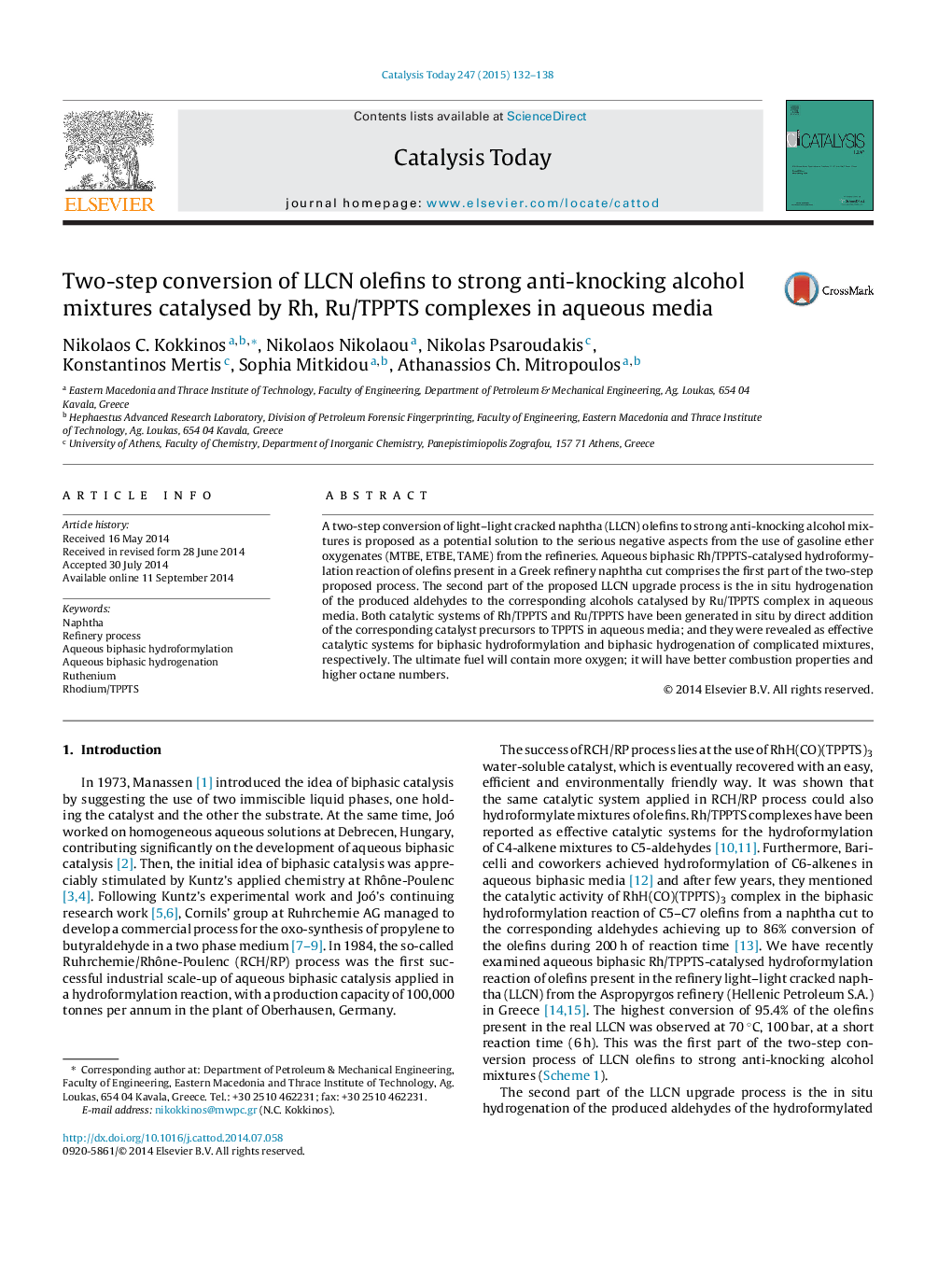| Article ID | Journal | Published Year | Pages | File Type |
|---|---|---|---|---|
| 54021 | Catalysis Today | 2015 | 7 Pages |
•Increase of oxygen on the fuel by producing favourable strong anti-knocking alcohol mixtures.•An environmentally benign vs. harmful gasoline ether oxygenates process.•A real refinery light–light cracked naphtha as substrate in aqueous two-phase catalytic reactions.•High conversion under mild conditions and at short reaction time.•Positive salt effect in the aqueous biphasic hydrogenation of complicated real mixtures.
A two-step conversion of light–light cracked naphtha (LLCN) olefins to strong anti-knocking alcohol mixtures is proposed as a potential solution to the serious negative aspects from the use of gasoline ether oxygenates (MTBE, ETBE, TAME) from the refineries. Aqueous biphasic Rh/TPPTS-catalysed hydroformylation reaction of olefins present in a Greek refinery naphtha cut comprises the first part of the two-step proposed process. The second part of the proposed LLCN upgrade process is the in situ hydrogenation of the produced aldehydes to the corresponding alcohols catalysed by Ru/TPPTS complex in aqueous media. Both catalytic systems of Rh/TPPTS and Ru/TPPTS have been generated in situ by direct addition of the corresponding catalyst precursors to TPPTS in aqueous media; and they were revealed as effective catalytic systems for biphasic hydroformylation and biphasic hydrogenation of complicated mixtures, respectively. The ultimate fuel will contain more oxygen; it will have better combustion properties and higher octane numbers.
Graphical abstractFigure optionsDownload full-size imageDownload high-quality image (106 K)Download as PowerPoint slide
